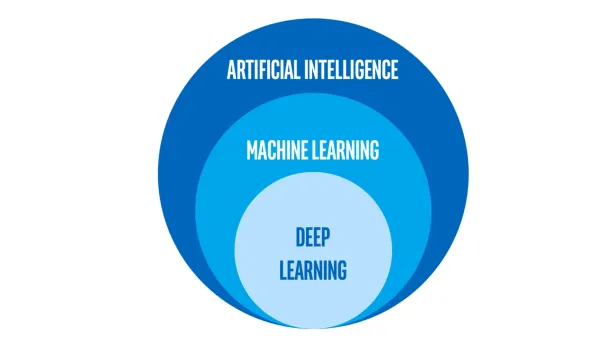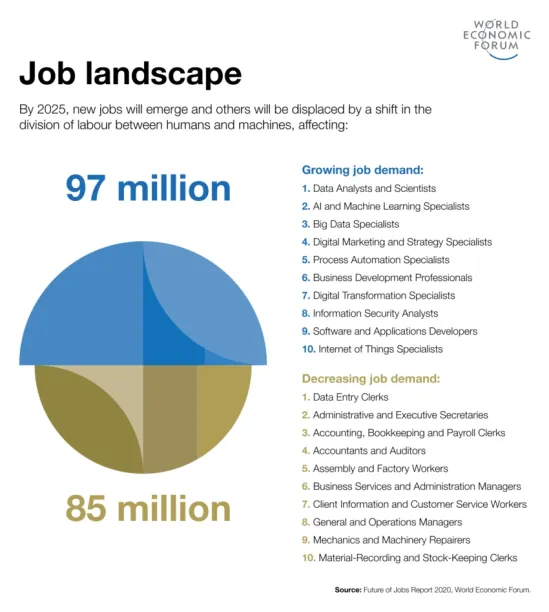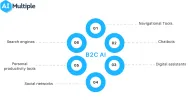Top 5 Myths and Misconceptions About AI in 2024
As the applications of artificial intelligence (AI) start to affect our everyday life from self-driving cars to product recommendations, it can become easy to be misled by myths and misconceptions about the technology. These myths can lead to a reluctance to adopt AI technologies in businesses or to unrealistic expectations from AI applications. We list five popular myths and the realities behind them:
Myth 1: Artificial intelligence, machine learning, and deep learning are the same things
AI refers to a broad class of techniques that enables computer systems to mimic human intelligence. Since ML is one of the most common and successful ways to achieve this, these two terms are often used interchangeably. However, AI contains many other subfields such as rule-based systems, natural language processing (NLP), or computer vision (CV).
ML is a class of statistical methods and a subset of AI (see Figure 1) that allows machines to learn patterns from past data and make predictions without being explicitly programmed. There are different types of ML algorithms such as support vector machine, regression, or tree-based methods but deep learning algorithms have received increasing interest in the last several years.
Figure 1: Machine Learning and Deep Learning as subsets of AI

Deep learning is a class of ML algorithms based on a structure called neural networks that are inspired by the human brain. DL algorithms can learn complex patterns from large amounts of data and have successful use cases in a large range of industries.
Myth 2: Not every company needs AI
AI enables companies to improve their products, optimize internal business operations and enhance external processes such as marketing and sales. Business benefits of AI are hard to ignore which reflects business adoption rates: 86% of participants state AI is becoming a mainstream technology in their company, according to a study by PwC.
Therefore, companies that don’t develop an AI strategy risk losing competitive advantage against companies that can
- Provide better customer experience with personalization, 24/7 customer service, etc.
- Conduct business operations more efficiently
- Make better predictions.
Thus, all companies must determine and implement suitable AI business use cases if they don’t want to fall behind of competition.
Myth 3: AI algorithms are unbiased
Building AI systems requires data, hardware, and human expertise. The process involves human decision-making in a lot of instances, and data collected from real-world events also represents human behaviors in many cases.
Since humans are biased in one way or another, it would be naïve to expect AI systems to be exempt from biases on their own. In addition, AI systems can also be biased due to incomplete data that does not represent its underlying real-world phenomenon.
Eliminating bias completely from AI systems may be impossible but a carefully designed system can minimize it. You can read our article on AI bias for a more comprehensive account.
Myth 4: AI will eliminate the necessity for human labor
Technological developments have been disrupting the employment landscape throughout history by making some jobs obsolete and creating new ones. It will also be the case for AI technologies. Currently, AI systems are successful in accomplishing narrow tasks and enhancing the productivity of human workers. It will certainly displace some occupations as its capabilities improve but it also creates new jobs (see Figure 2) such as data scientist, ML specialist, process automation specialist, and the ones we can not even think about now.
Figure 2. Job Landscape by 2025

Rather than the elimination of human labor, a more immediate problem due to AI can be the rising income inequality. For instance, a study reveals that 50% to 70% of the change in US wages since 1980 is due to wage declines of workers specialized in routine tasks that were replaced or degraded by automation.
Myth 5: AI will only affect routine and manual jobs
As mentioned above, AI is currently successful in narrow tasks while most jobs are complex combinations of many interrelated tasks that require human intelligence to carry out. However, specialized jobs also significantly benefit from AI. For instance, an AI application can process underwriting submissions faster than an insurance underwriter, or scan a large number of legal documents and capture relevant information faster than a lawyer.
These examples show that although AI will not eliminate human involvement, most jobs will not stay the way we know them. As Curtis Langlotz, a radiology professor at Stanford states, “AI won’t replace radiologists, but radiologists who use AI will replace radiologists who don’t.”
If you want to implement AI applications in your business but don’t know where to start, you can check our data-driven lists of:
If you have other questions about artificial intelligence or machine learning, feel free to ask:

Cem has been the principal analyst at AIMultiple since 2017. AIMultiple informs hundreds of thousands of businesses (as per similarWeb) including 60% of Fortune 500 every month.
Cem's work has been cited by leading global publications including Business Insider, Forbes, Washington Post, global firms like Deloitte, HPE, NGOs like World Economic Forum and supranational organizations like European Commission. You can see more reputable companies and media that referenced AIMultiple.
Throughout his career, Cem served as a tech consultant, tech buyer and tech entrepreneur. He advised businesses on their enterprise software, automation, cloud, AI / ML and other technology related decisions at McKinsey & Company and Altman Solon for more than a decade. He also published a McKinsey report on digitalization.
He led technology strategy and procurement of a telco while reporting to the CEO. He has also led commercial growth of deep tech company Hypatos that reached a 7 digit annual recurring revenue and a 9 digit valuation from 0 within 2 years. Cem's work in Hypatos was covered by leading technology publications like TechCrunch and Business Insider.
Cem regularly speaks at international technology conferences. He graduated from Bogazici University as a computer engineer and holds an MBA from Columbia Business School.
To stay up-to-date on B2B tech & accelerate your enterprise:
Follow on

Comments
Your email address will not be published. All fields are required.